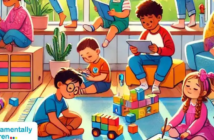Gen Z is the most web-savvy, app-friendly generation. This young generation favours more personal, immediate platforms such as Snapchat and Whatsapp, rather than broadcasting their lives widely and publicly for all to see through the likes of Facebook and Twitter. Content producers have to react to this preference if they want to target Gen Z. That’s why chat fiction is on the rise.
Beginning of June, the first ever Whatsapp drama series debuted. It’s called Uk’shona Kwelanga and allowed people to follow characters from a particular family through their trials and tribulations. The series is created in partnership with South African insurance company Sanlam and written by South African scriptwriter Bongi Ndaba. The 7-part drama series is told using texts, photos, voice notes, and video. “The plot follows the sudden and unexpected death of Bab’ Langa, which leaves the family shocked and saddened. When they set up a WhatsApp group to plan the funeral of the much-loved elder, tensions soon start to rise as they face financial pressure, family secrets and unanswered questions. Will they have enough money to give Bab’ Langa the funeral he deserves?” Sanlam said in a statement.
Uk’shona Kwelanga isn’t the first drama series told as chat stories, though. Just as Charles Dickens serialised tales like The Pickwick Papers, the Hooked app has found a way of presenting stories in a way that the target audience already likes to read. It creates novels through fictional text message conversations between two characters. The app initially launched in 2015, but it started growing quickly end of last year. Now, it’s risen to the top of Apple’s top free apps chart, surpassing apps like Bitmoji, Instagram, and Snapchat. In fact, according to app analyst Sensor Tower, Hooked’s total downloads grew from about 336,400 in October 2016 to 2.22 million in March 2017 — which equates to a 560% jump. Learn more about Hooked.
As Prem Gupta, co-founder of Hooked, points out: “You cannot compete with Snapchat and Instagram and Facebook for a teenager’s attention on their phone with a 300 page novel written and presented in a normal style.” With the first story’s success of 85,000 views, Hook’s novels-as-SMS prove that bite sized narratives delivered over time retain interest and loyalty amongst readers. The ease of use and seamless integration into teen’s daily lives may breathe new life into the age-old format of the novel.
Amazon rolled out its own chat-style reading app end of last year. It’s called “Rapids” and is supposed to help kids aged seven to twelve enjoy reading. The subscription-based system offers a range of kids stories, but rather than being told in chapters and paragraphs, they’re shown in small text message-size snippets, and presented as if the story’s characters are DMing each other. The app can also read stories out loud, and includes glossaries, so users can look up any words they don’t know and check how to pronounce them.
As the age of printed word comes to a close and teenagers watch less and less conventional TV, social platforms provide new formats for creative storytelling.
Top photo © filadendron/GettyImages




